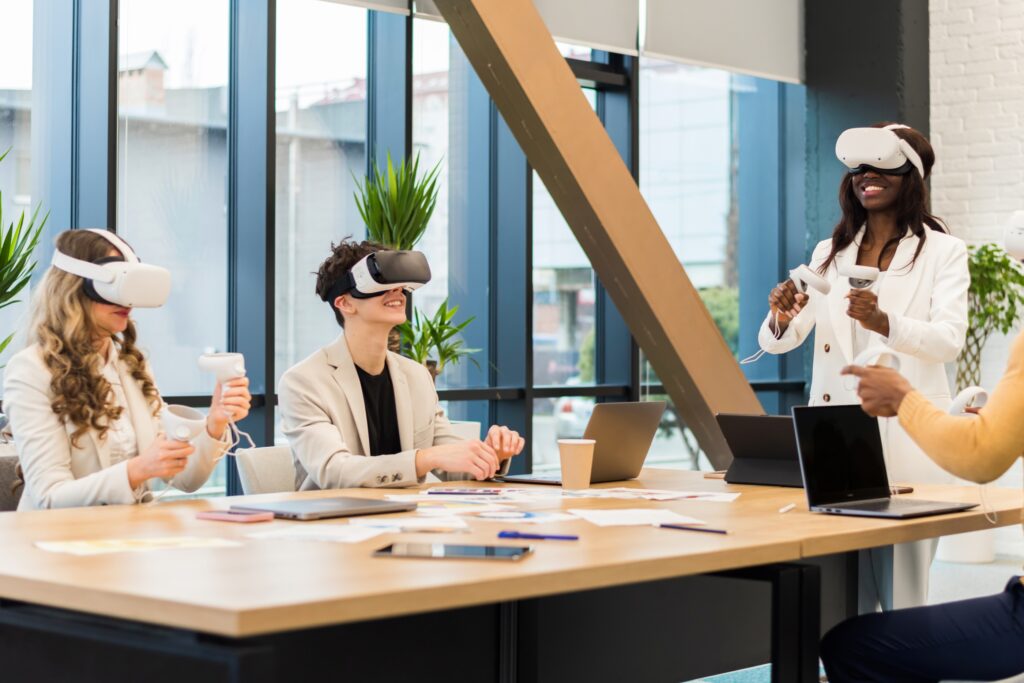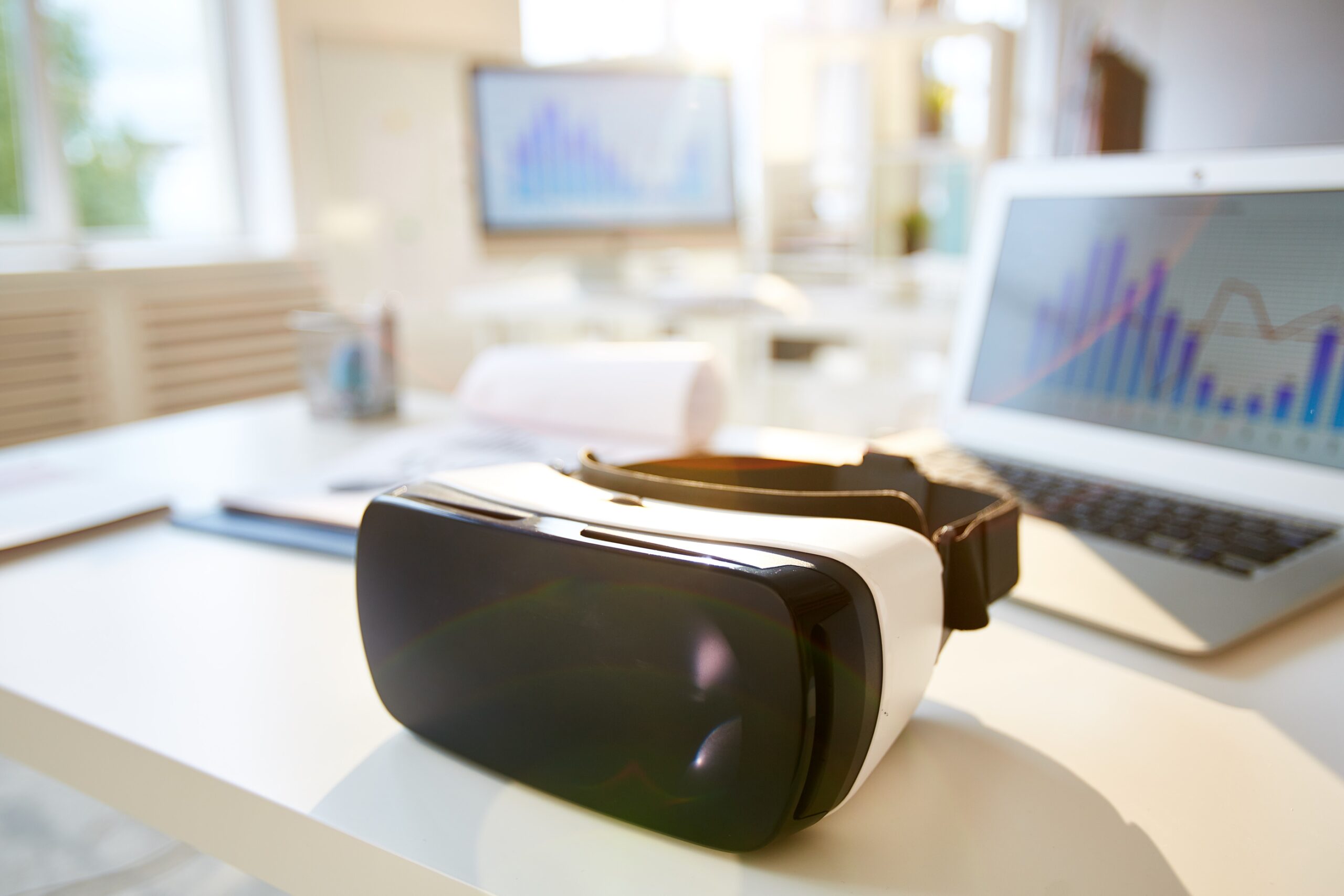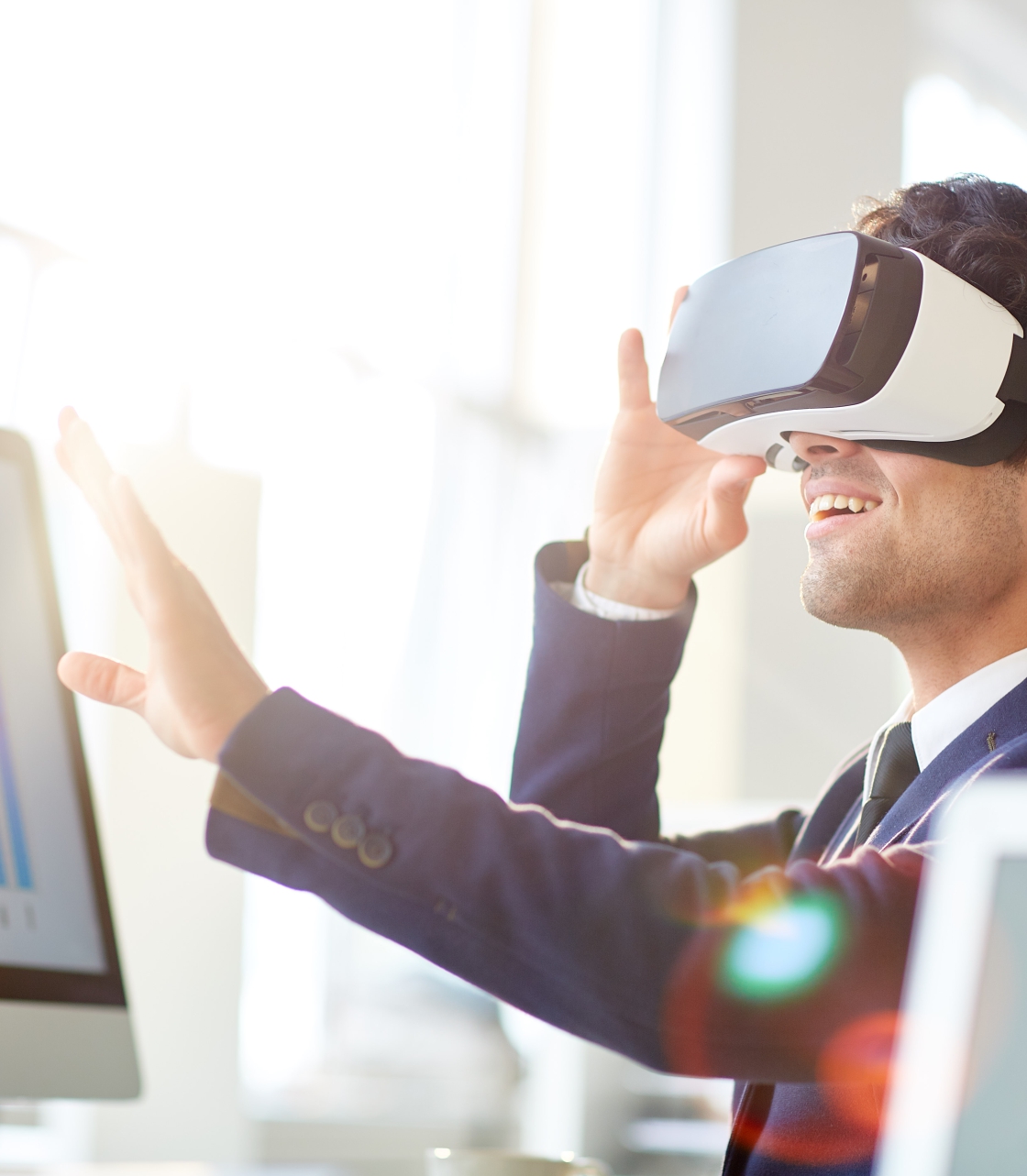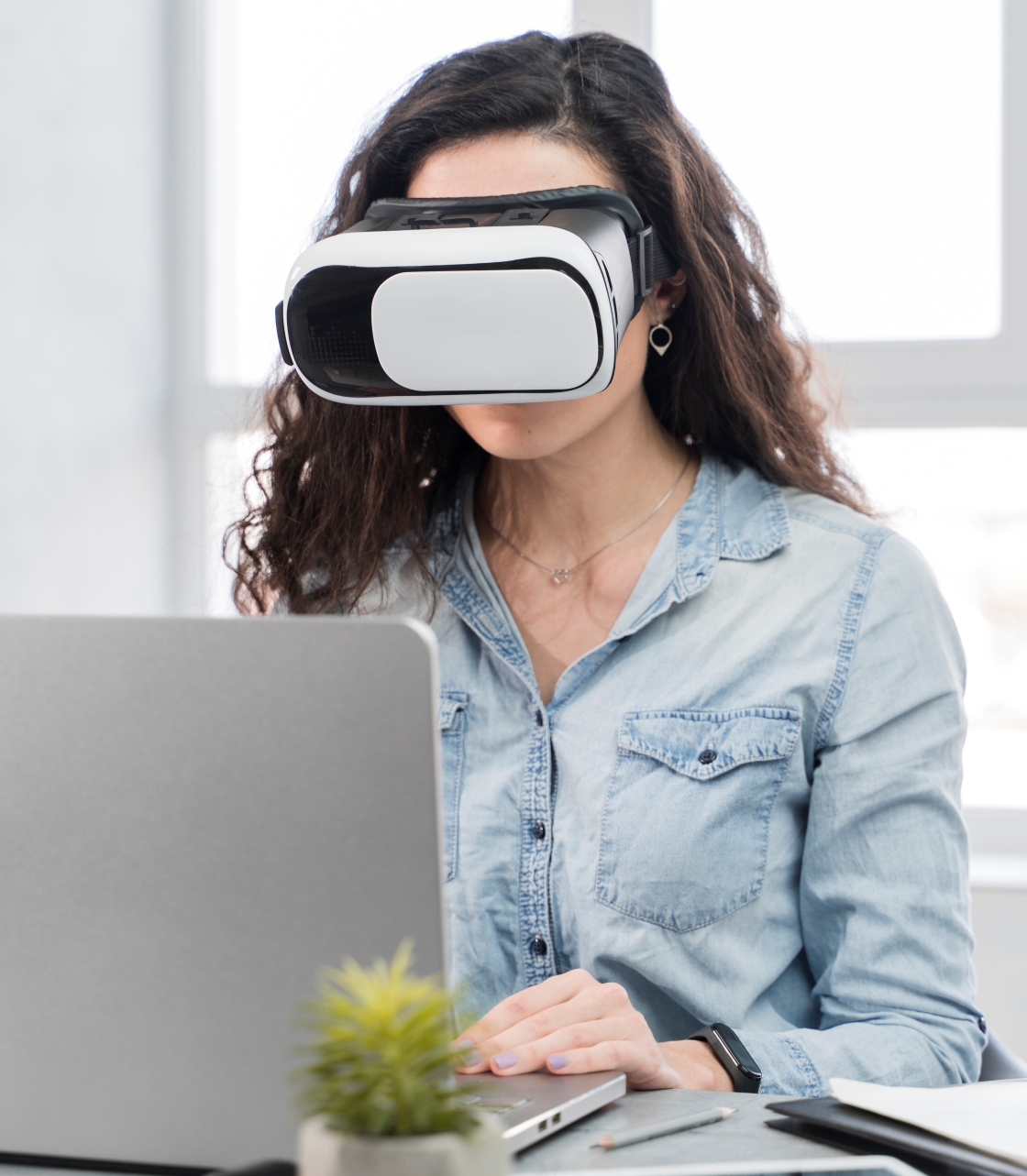Spatial computing uses cameras and sensors to create a digital model of people, objects, machines and the environments. Interaction and control in spatial computing often uses gestures, body movements and/or voice commands. Spatial computing combines elements of virtual reality (VR), augmented reality (AR) and mixed reality (MR).
What is Vision Pro?
Apple Vision Pro is a spatial computer that creates immersive and interactive experience. This headset has advanced features and sleek design transforming the way with interact.
It seamlessly blends digital content into physical space while allowing users to stay present and connected to others. It allows users to maintain awareness of their surroundings while still engaging with virtual content. It offers ways to navigate digital content using eyes, hands and voice.
It can create lifelike experiences for gaming, entertainment, collaboration and more. It is extensively used in a number of sectors like healthcare, retail, tourism, education, manufacturing and more.
Sysfort is an invention-based enterprise to promote global economic growth. Innovation: it’s truly the key to accomplishing things in life.
visionOS:
The Apple Vision Pro is equipped with visionOS, the spatial operating system which enables interaction with digital content. With visionOS, you can use built-in apps, transform your space with Environments, connect with others in calls, and download third-party apps from the App Store.
Apple VisionPro experience begins with Home View. From here user can navigate between Apps, People and Environment View. Apps View lets you open underlying app with just a tap. People View allows you to connect with others while Environment View transforms your surroundings into immersive landscape.

Advanced Technology:
Apple Vision Pro has a number of advanced technologies, including:
- Micro-OLED displays: For immersive viewing experience.
- R1 chip: To render 3D graphics and process spatial audio.
- Spatial audio: To create a surround sound experience.
- Eye tracking: To provide more immersive experiences.
- Passthrough mode: To interact with the physical world through the display.
- Hand tracking: To interact with virtual objects.
Sustainability:
Apple Vision Pro has features, sensors to assist users with special needs for vision, hearing and mobility. It is manufactured using recycled materials.
Utilize Vision Pro:
Apple Vision Pro can turn any room into a private movie theater. It can make movies, TV shows and games bigger, so it feels like you are right in the middle of the action. It has clear picture quality, even better than a 4K TV, for each eye. So, whether you are on a plane or just relaxing on your couch at home, you can enjoy amazing entertainment.
The Apple Vision Pro is different from regular iPads because it lets you use a much bigger virtual screen.
It can make the screen as big as you want, giving a better and more flexible way to see things. It is like having a big screen TV that you can carry around with you.
Pros and Cons:
Pros:
The Apple Vision Pro lets you surf the internet, watch movies, play games and use your favorite apps. The apps you use show up on a screen that looks like real life. You can also make audio and video calls with friends using the headset.
The device has good sensors and a strong computer inside. It can give you a cool experience when playing games or using augmented reality (AR).
Vision Pro works well with other Apple devices. It shares data with your iPhone and uses all the apps and services that Apple offers. The apps and features from other Apple devices are designed to work great on Vision Pro too.
Cons:
It comes with a tall cost tag.
The Future:
Vision Pro will soon become a fundamental part of our world. Advancement in artificial intelligence, 5G technology and networking technology will assist the growth of spatial computing. It will form the foundation of a new relationship between people and machines.



